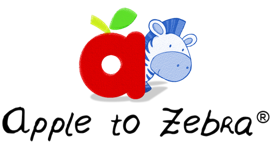Earth & Space
Rocks – Be “rock hounds” and start a rock collection.
Group rocks that are alike by size, texture, colour, weight, etc.
Categorize rocks from large to small.
Use rocks in art projects. For example, decorate a “pet rock,” make rubbings of rocks, make a collage of small pebbles, etc.
Compare rough rocks and smooth pebbles. What has made them different? Discuss the weathering of rocks.
Take a hammer and crack open a rock. (Be sure and wear safety goggles and caution the child not to do this alone.)

Dirt – Dig up a box of dirt. Have the child to smell it and feel it. Spread it out on a newspaper and sort through it. Play “detective” with a magnifying glass and try to figure out what the different particles are.
Go on a nature walk and take a small shovel and several plastic bags. Collect dirt samples and compare when you return home or to the classroom.
Play with mud without getting dirty. Put some dirt in a zip lock bag. Add a little water, zip the bag shut, and begin to squeeze and make designs.

Oceans and Streams – Collect a box of sand and shells from the shore and let the child investigate and sort through.
Group sea shells that are alike by shape, size, colour, etc.
Where do sea shells come from? Identify the various animals that live in shells.

Make an “ocean in a bottle.” Fill a plastic bottle with 1/3 baby oil and 2/3 coloured water. Glue the top on and swirl and sway the bottle.
Collect water samples from a stream, lake, or ocean. Can you drink the water> Why or why not?

Earth – The planet we live on is earth. Hold up a globe and talk about the shape of the earth. Discuss which colours represent land and which represent water.
Sun – The star closest to us is the sun. What does the sun do for us? What would happen if we had no sun?
Moon – The moon is a satellite that goes around the earth. The moon is always the same, but its shadow changes. Draw various phases of the moon.

Day and Night – Use a flashlight and a globe to illustrate how the earth’s rotation causes day and night.
Ask the child to draw pictures of day and night on different sides of a sheet of paper.
What happens to different animals at night? Talk about nocturnal animals like the owl, bat, and opossum.

Solar System – This saying will help you remember the proper order of the planets in the Solar System.
“My very eager mother just served us noodles.”
My – Mercury
Very – Venus
Eager – Earth
Mother – Mars
Just – Jupiter
Served – Saturn
Us – Uranus
Noodles – Neptune

Stars – What makes stars twinkle? The light from the stars must travel form far away, and when it goes through dust particles it makes them appear to twinkle.
Have the child draw a picture of the night sky.
Hold a flashlight close to the child, then move farther away. What happens to the light as you move away? How large do you think the stars must be for their light to reach us on earth?
Long ago people imagined groups of stars made pictures of animals, people, and things in the sky. Let the child paste silver stars on black paper to resemble constellations.
Punch holes in a sheet of black paper, then hold it up to the light.
Space travel – Watch the launching of a shuttle on television.
Bring in newspaper clippings of shuttle launchings.
Count backwards and pretend to be rockets blasting off.
Dramatize being astronauts in space. Move in “slow motion” as you walk on the moon.
Use a model of a rocket to illustrate the different sections and their functions.
What kinds of things do astronauts need to take with them in space?
If you were an astronaut, where would you like to travel? Why?
Make paper airplanes and fly them on the playground.

